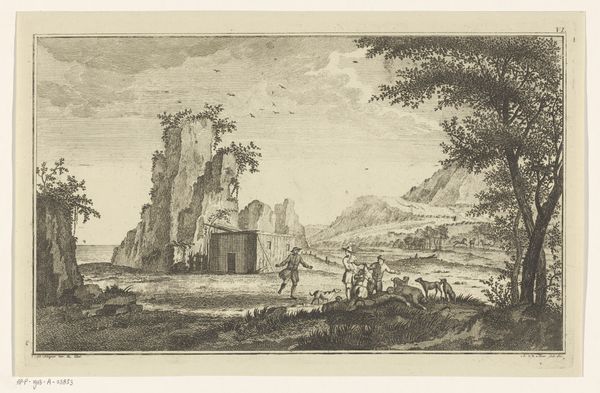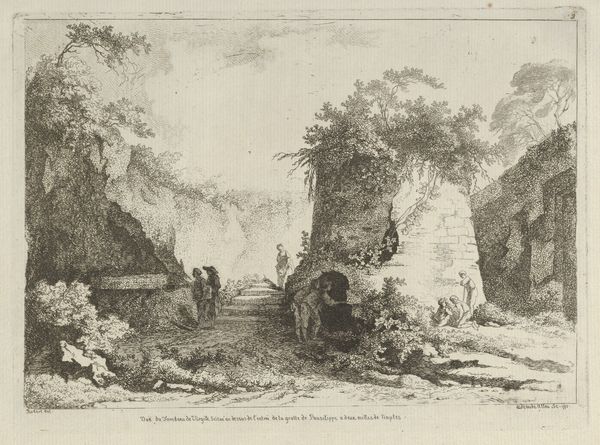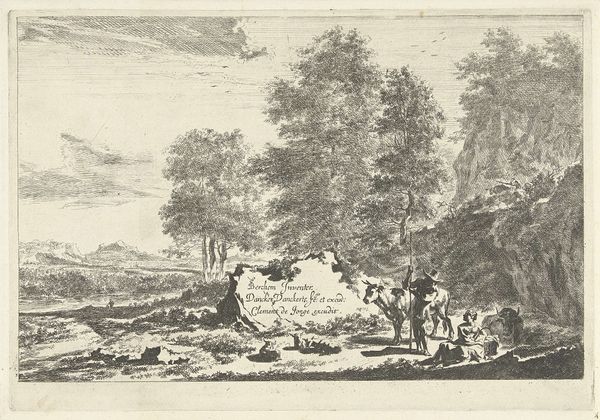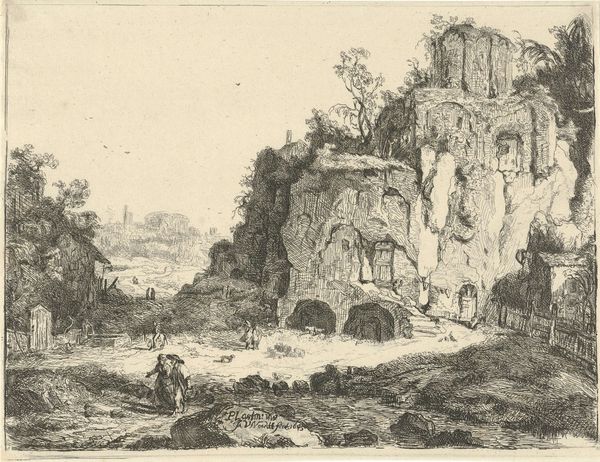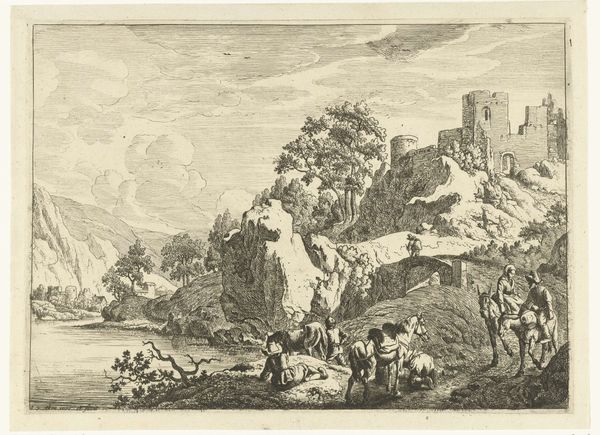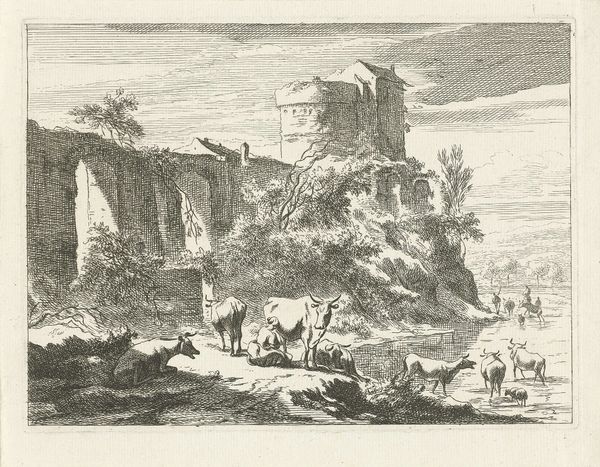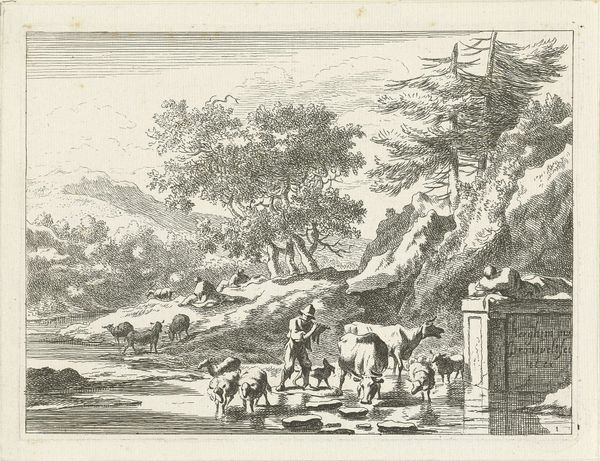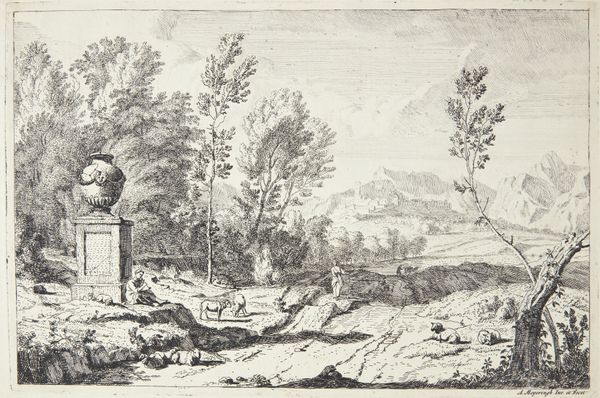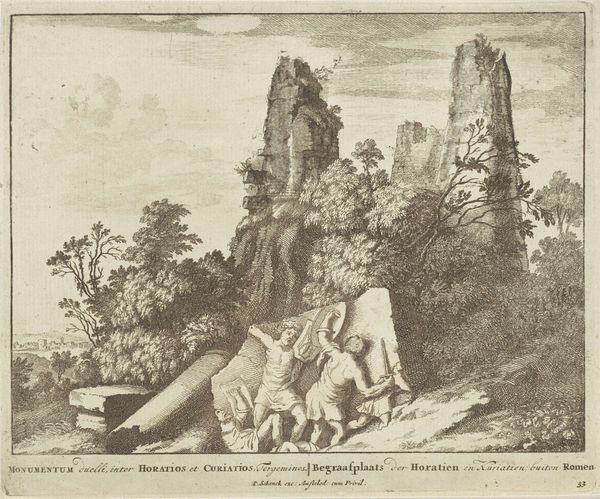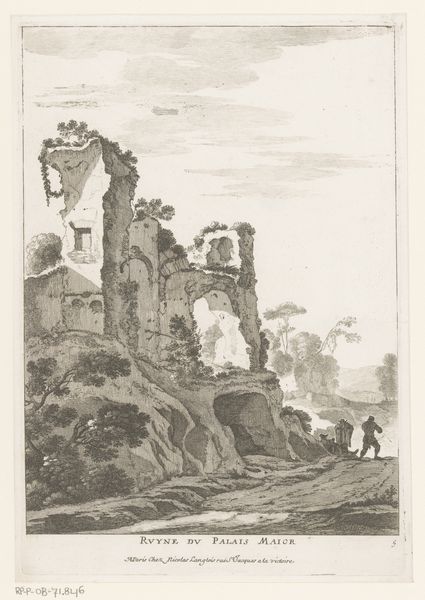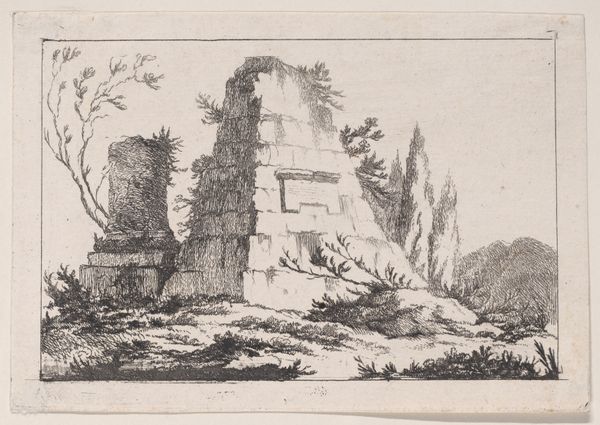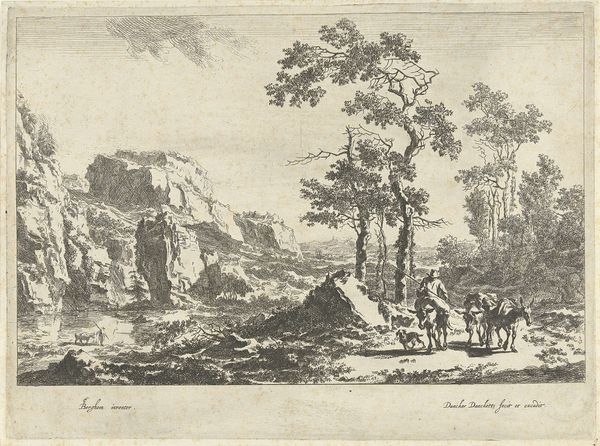
drawing, print, engraving
#
drawing
#
baroque
# print
#
landscape
#
engraving
Dimensions: height 147 mm, width 200 mm
Copyright: Rijks Museum: Open Domain
Curator: Before us, we have "Landscape with Ruin and Shepherd on a Donkey," an engraving by Johannes Gronsveld, created sometime between 1679 and 1728. Editor: Immediately, I’m struck by this overwhelming sense of decay—but a beautiful decay. Look at the crumbling architecture overtaken by nature; it’s so evocative. Curator: Indeed, Gronsveld uses the hard lines of the engraving to contrast the robust architecture with the figures seemingly undisturbed in this rural scene, but think about the work itself. The copper plate used for engraving would need to be prepared meticulously—polished, coated, the image carefully incised. A painstaking process! Editor: And it yields these gorgeous effects. Ruins always have such powerful symbolism. They whisper of empires fallen, of time’s relentless march. Even the shepherd, seemingly insignificant, stands as a testament to life's continuity amidst all that is broken. Curator: I agree, and consider how this image would be reproduced. The use of printmaking allowed for widespread dissemination. For those who couldn't travel, these images would bring pastoral scenes and classical references to their very doorstep. Think of it as the mass production of 'high art' – a democratization of visual experience. Editor: It becomes almost an allegory. The figures within the image become us, navigating through history, finding life amongst the ruins. Perhaps that's why it still resonates so deeply; it touches something archetypal within us. Even the inclusion of the donkey holds significance as the humblest of transport, or of burdens to carry. Curator: Precisely, each impression struck from the plate would carry the marks of that labor, reminding viewers of both the hand of the artist and the mechanics of the process. But it brings up an interesting dilemma for me. Is it ‘art’ or ‘craft?’ Is its cultural value in the image it depicts, or the mechanics by which the image exists in so many spaces? Editor: The beauty of it, for me, is in the blend of the two. It makes me reflect on the resilience of symbols. That this rustic scene, preserved through a repeatable artistic method, offers an escape and invites consideration. Curator: Ultimately, Gronsveld’s detailed approach to landscape encourages contemplation about a society grappling with shifts in labor, and class. Editor: It’s fascinating to consider these intersecting views. Now when I look at this landscape, I can see those narratives living side-by-side.
Comments
No comments
Be the first to comment and join the conversation on the ultimate creative platform.
